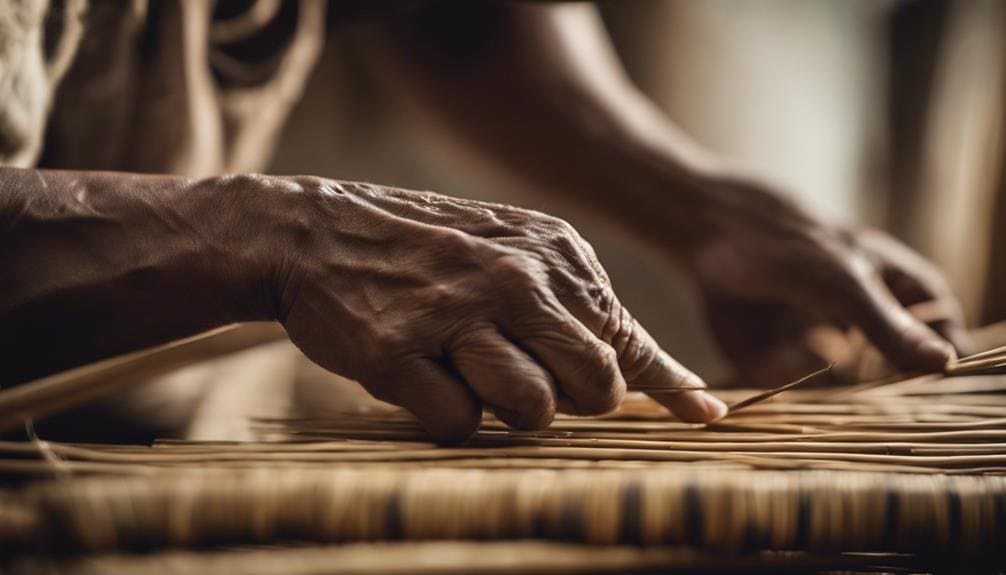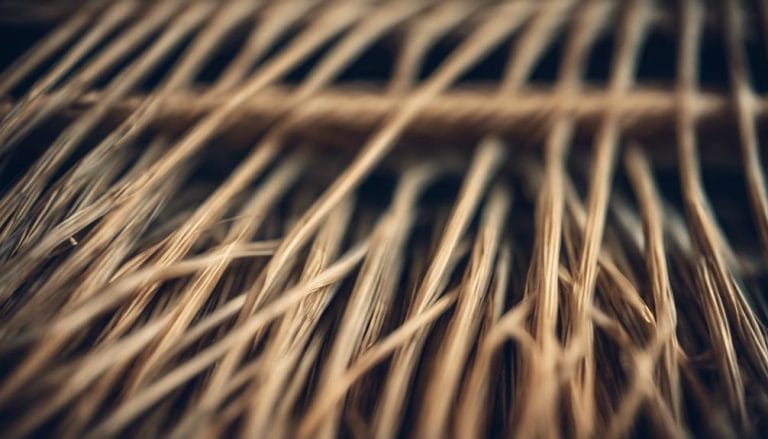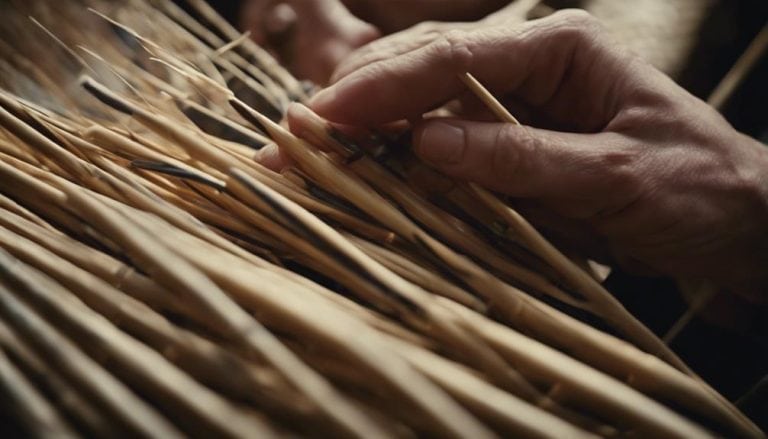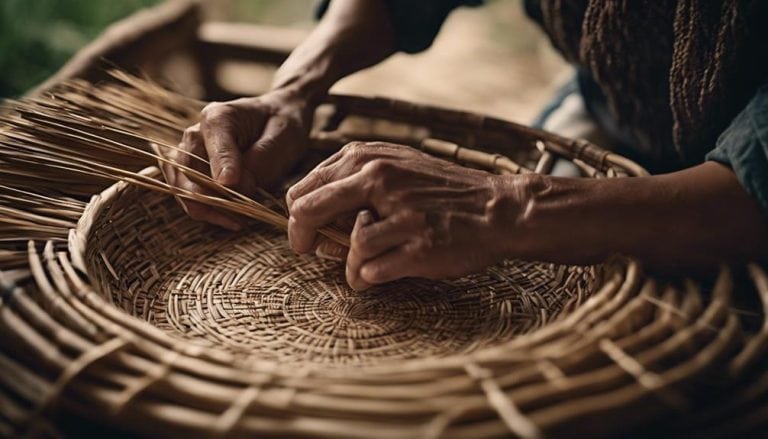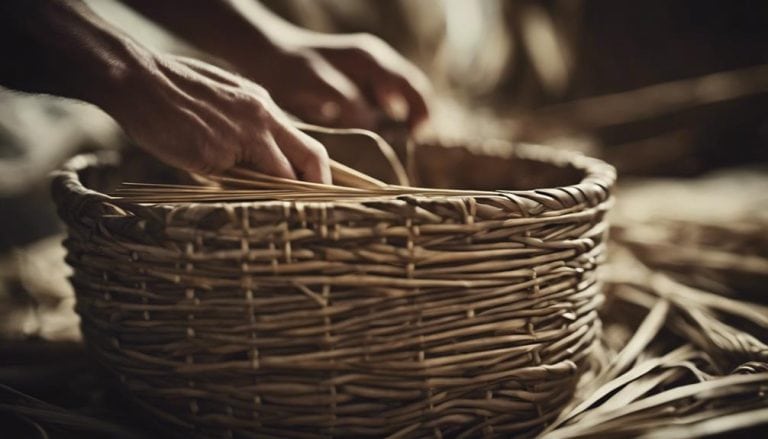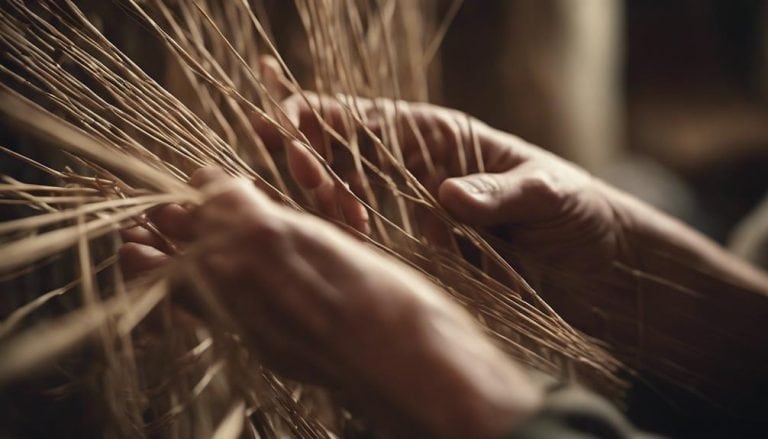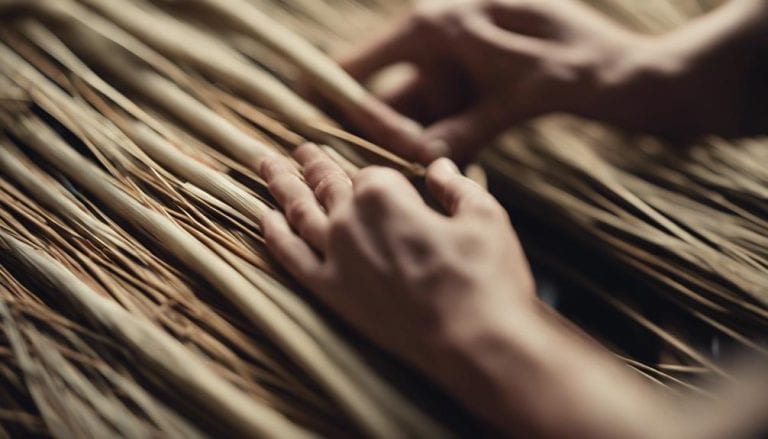Basketry: Working With Rattan Cane and Rush Reeds
In the world of basketry, working with rattan cane and rush reeds is akin to a delicate dance between tradition and innovation. Imagine a symphony where each strand of cane and reed plays a crucial role in creating a harmonious masterpiece.
As I explore these materials’ intricate techniques and versatile nature, I am constantly reminded of their endless possibilities in basket weaving. From the natural beauty of rattan cane to the flexible allure of rush reeds, a captivating journey awaits those curious to embark on this creative path.
Rattan cane and rush reeds are commonly used materials in basketry. They offer flexibility and durability for crafting beautiful and functional baskets.
Key Takeaways
- Rattan cane and rush reeds offer sustainability and durability for basketry projects.
- Techniques like soaking, choosing the right size, and applying even tension are crucial.
- Preparation steps include removing thorns, cleaning, and exposing the inner core for crafting.
- Design inspiration from nature, patterns, and cultural elements enhance rush-red projects.
Benefits of Using Rattan Cane
Using rattan cane in crafting projects promotes environmental sustainability and offers artisans a forgiving and cost-effective material. This versatile material is sourced from rainforests, ensuring its production is eco-friendly. Its durability makes it an excellent choice for creating long-lasting pieces of art. Rattan cane’s forgiving nature allows easy manipulation, making it ideal for weavers of all skill levels. Its cost-effectiveness enables artisans to experiment and create without breaking the bank.
The longevity of rattan cane ensures that creations will stand the test of time, requiring minimal maintenance. This material’s ability to rejuvenate with just a touch of oil showcases its resilience and low-maintenance characteristics. By choosing rattan cane for crafting endeavors, we support sustainability and embrace a material that offers endless creative possibilities at an affordable price.
Techniques for Weaving With Rattan
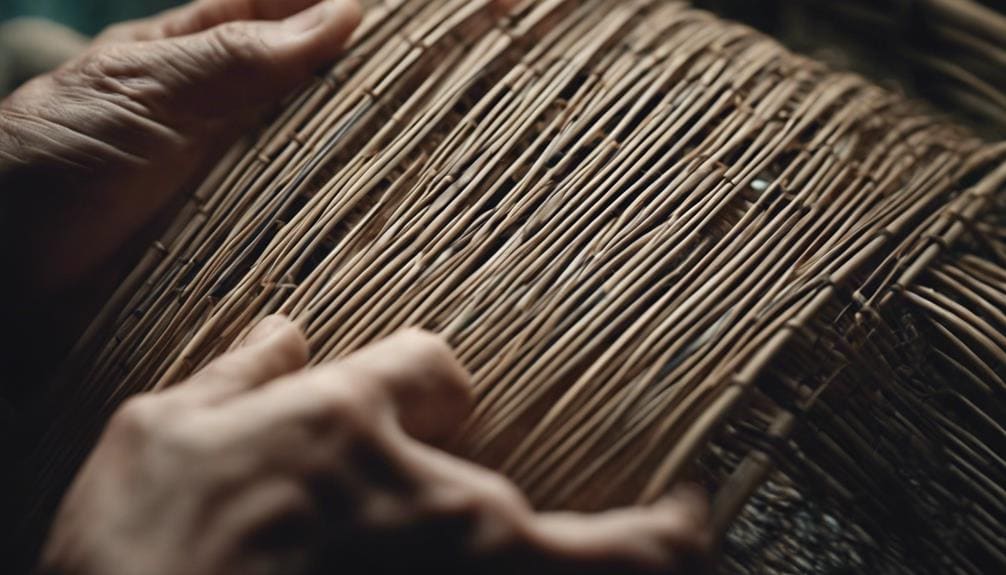
After exploring the benefits of working with a rattan cane, let’s uncover the intricate techniques for weaving this versatile material.
- Rattan care: Soaking rattan cane in warm water before weaving is crucial. This process increases flexibility, making the material less prone to breakage during intricate weaving patterns.
- Weaving styles: The right size and thickness of rattan cane are essential for different weaving patterns and projects. This ensures the basket’s structural integrity while allowing creative designs to flourish.
- Rattan art, advanced techniques: To elevate your weaving skills, consider using a spoke weight to keep the cane in place while working on intricate designs. Applying even tension throughout the weaving process results in a uniform and sturdy basket. Finish off the ends of the rattan cane by neatly tucking them into the weave for a polished and professional look. These advanced techniques will take your rattan artistry to the next level.
Types of Rush Reeds for Basketry
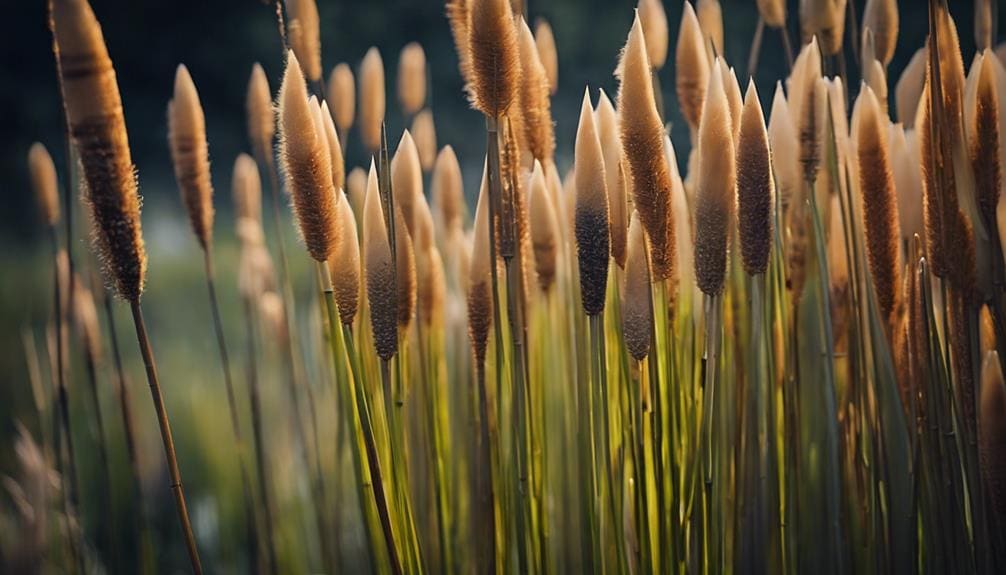
In the intricate world of basketry, exploring the diverse types of rush reeds opens up a realm of creative possibilities and unique weaving properties. Common rush varieties like soft rush, bulrush, and cattail rush bring their characteristics to the weaving table. With its flexibility and smooth texture, soft rush lends itself beautifully to intricate rush weaving patterns, especially in coiling and twining techniques. On the other hand, bulrush, also known as cattail rush, boasts a thicker build, making it perfect for creating sturdy basket baskets and chair seating that align with current rattan furniture trends.
These rush reeds can further be customized through dyeing, smoking, or leaving them natural to achieve different aesthetic effects in basket weaving projects. Whether aiming for a contemporary look in line with rattan furniture trends or a traditional feel with intricate rush weaving patterns, the choice of rush reed can greatly influence the outcome of your basketry creations.
Preparing Rattan Cane for Projects
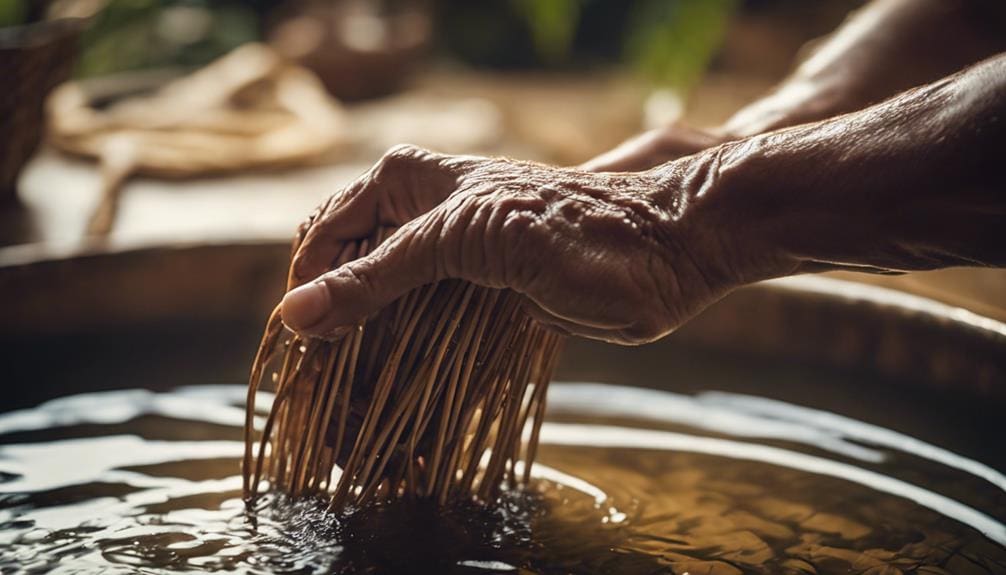
The outer thorns are carefully removed to prepare rattan cane for projects, and the bark is stripped, revealing the versatile inner pith used in wicker furniture and basket weaving. The stripping process involves delicately peeling away the outer layer to expose the smooth inner core, which is ready for crafting.
Here are some cleaning methods to consider before starting your project:
- Dry Cleaning: Use a soft brush to remove dust and debris from the rattan cane.
- Damp Cloth Wiping: Gently wipe the rattan cane with a wet cloth to remove any stubborn dirt or stains.
- Vinegar Solution: For tougher stains, mix vinegar with water and lightly dab the affected area to clean it effectively.
Design Inspiration for Rush Reeds
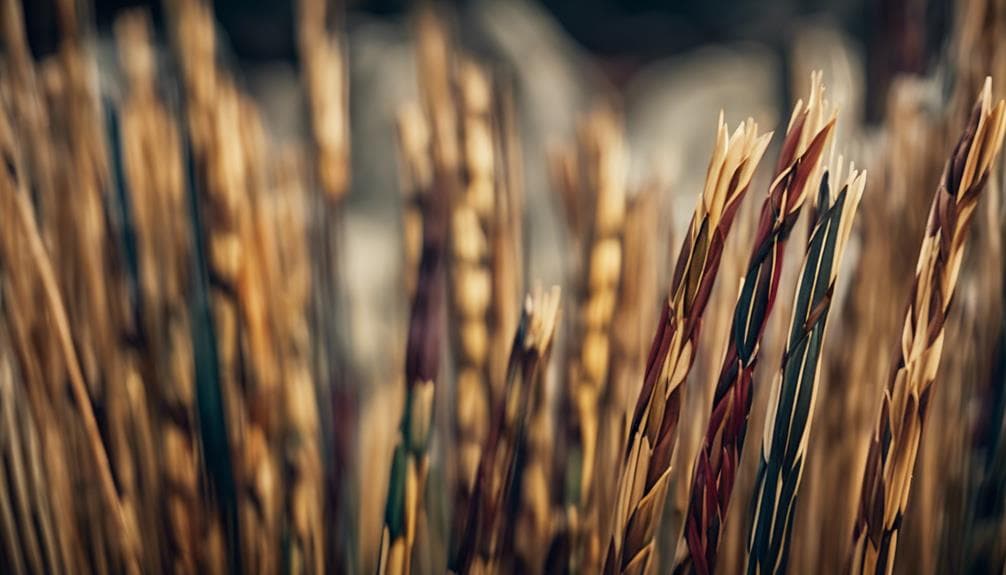
With a keen eye for detail, I draw design inspiration from nature, geometric patterns, and historical basket-weaving styles to create captivating rush-red projects. Natural elements like flowing rivers, swaying grass, and intricate leaf patterns guide my hand as I weave intricate designs with rush reeds. Abstract designs inspired by the play of light and shadow in a forest or the ripples on a pond infuse my creations with a sense of movement and depth.
Cultural influences also play a significant role in my design process, blending traditional techniques with modern twists. Drawing inspiration from diverse cultures and their unique weaving styles allows me to create baskets that tell stories of heritage and innovation. By incorporating these influences into my designs, I aim to create pieces that are not only visually stunning but also carry a deeper narrative within their woven threads.
Maintenance Tips for Finished Baskets
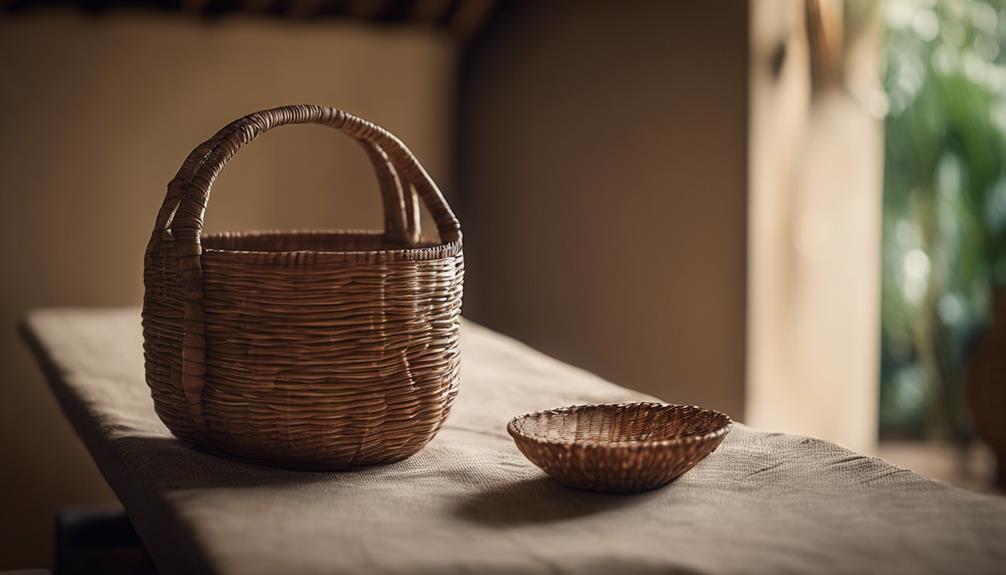
What key steps are essential in maintaining the pristine condition of your finished baskets? Proper maintenance is crucial in preserving their beauty and longevity.
Here are some cleaning techniques and preservation methods to help you keep your finished baskets looking their best:
- Gentle Cleaning: Use a soft brush or a vacuum with a brush attachment to delicately remove dust and debris from your baskets. Avoid using harsh chemicals or abrasive materials that could damage the finish.
- Sunlight Protection: Keep your baskets away from direct sunlight for prolonged periods to prevent fading. UV rays can cause colors to fade and materials to weaken over time.
- Storage Care: Store your baskets in a cool, dry place to prevent mold or mildew growth. Ensure proper ventilation to maintain the integrity of the materials.
Incorporating Rattan and Rush in Home Decor
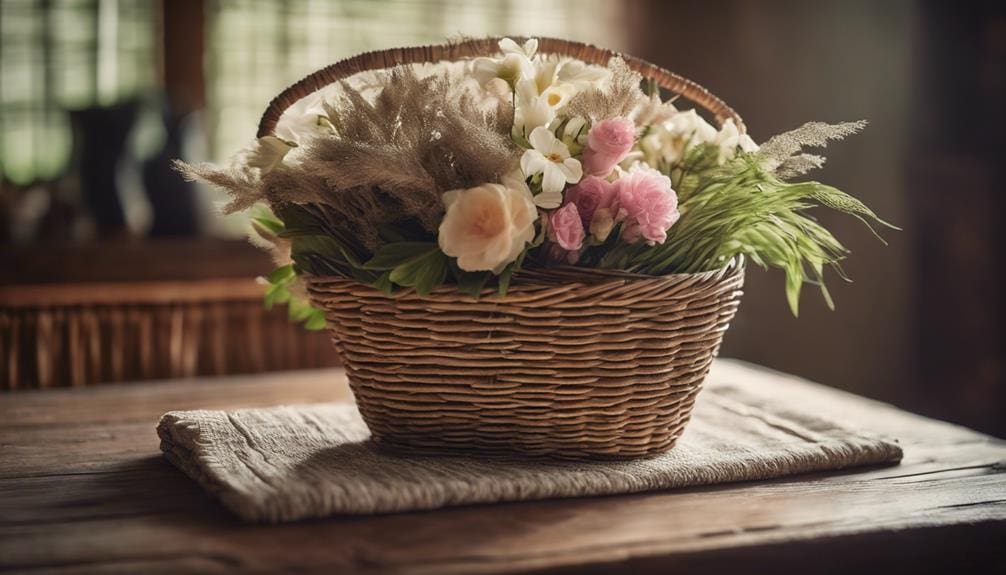
Incorporating the natural elements of rattan cane and rush reeds into home decor infuses a rustic charm and textural depth into interior design schemes. With its durability and flexibility, Rattan lends itself well to weaving intricate patterns in decor pieces, adding a touch of artisanal craftsmanship. Pairing rattan with plants can create a harmonious blend of natural elements, bringing a touch of the outdoors inside.
On the other hand, rush reeds offer a softer texture, perfect for chair seating, basketry, and wall hangings, adding a tactile dimension to the decor. Mixing rattan cane and rush reeds in home decor projects allows for a dynamic play of textures and earthy tones, elevating the overall aesthetic of a space. Whether incorporating rattan in furniture accents or using rush reeds for wall decor, these materials offer a versatile and stylish way to introduce a touch of nature into your home.
Frequently Asked Questions
What Is the Difference Between Rattan and Reed?
I can clarify the distinction between rattan and reed. Rattan, akin to bamboo, is a flexible and durable vine used for furniture and basket weaving. Reed, similar to willow, is the processed inner core of rattan, perfect for crafting baskets.
How Long to Soak Reeds for Basket Weaving?
I soak reeds for basket weaving for 20-30 minutes to make them pliable. Thicker ones may need 1-2 hours. Once fully submerged in warm water, they become flexible. Adjust the soaking based on the reed type. Properly soaked reeds weave more easily.
What Are the 4 Techniques of Basket Weaving?
Basket weaving employs techniques like coiling, plaiting, twining, and wickerwork. These methods intertwine materials to form intricate patterns. Coiling wraps materials around a core while twining creates stability. Wickerwork weaves flexible materials for decorative elements.
What Is Reed and Cane Basket?
Crafting reed and cane baskets intertwine creativity with functionality. Reed weaving techniques like plaiting and twining, combined with the cane’s durability, result in diverse basketry styles. Material selection influences the texture and strength of the final product.
Conclusion
Working with rattan cane and rush reeds is like painting with nature’s brushstrokes in the art of basketry. The intricate weaving techniques and design possibilities offer a canvas for creativity to flourish. Just as a skilled artist brings life to a blank canvas, so too can a basket weaver transform simple materials into beautiful and functional pieces that add warmth and character to any space.

